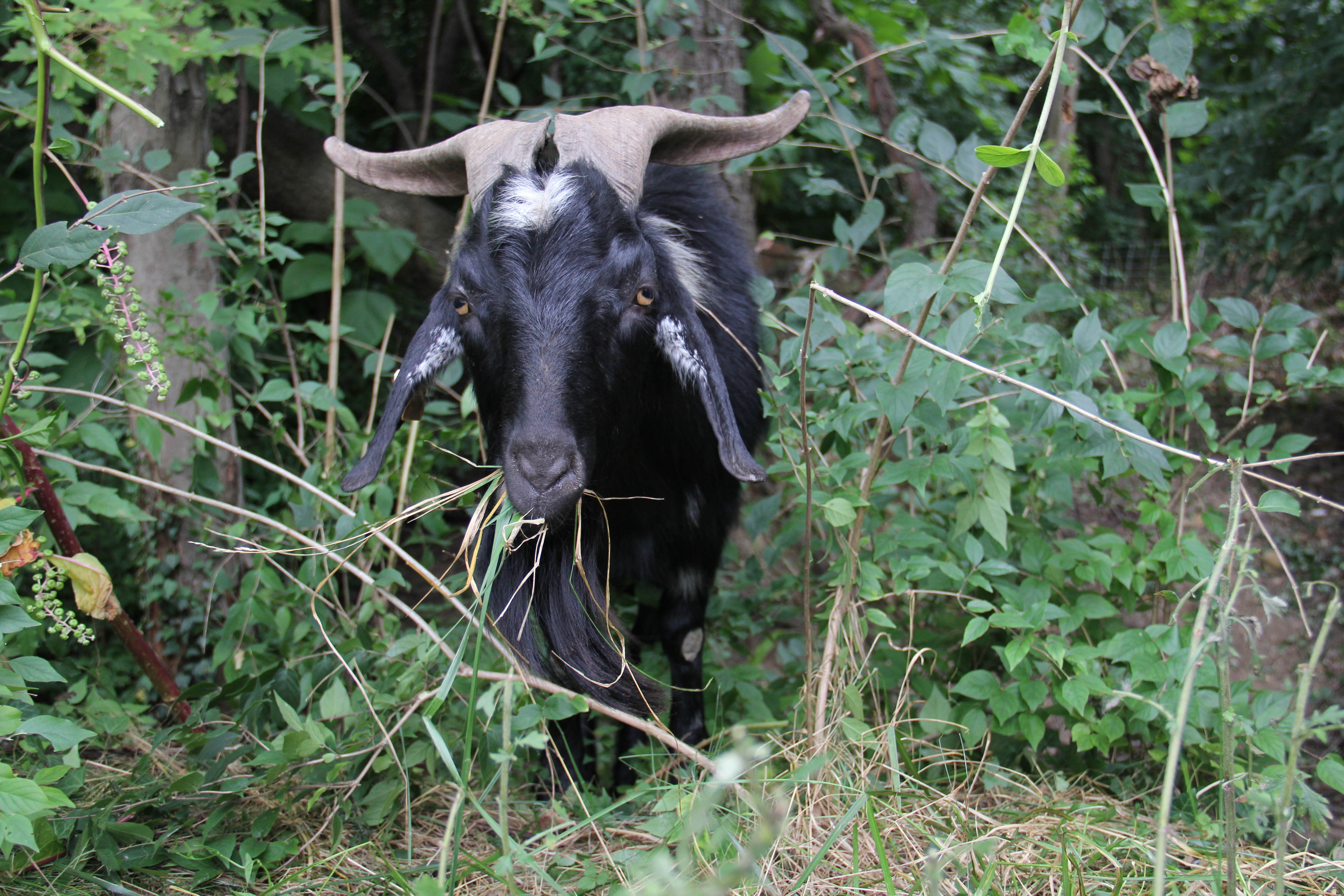The Congressional Cemetery hosted some unusual visitors Aug. 6 when managers brought in more than 30 Browsing Green Goats.
Hailing from Prosperity Acres in Sunderland, Maryland, the herd is helping groundskeepers maintain a 1.6-acre forested area just south of the cemetery by munching on all types of invasive species, from poison ivy to kudzu.
The 35-acre historic cemetery located on Capitol Hill is among the oldest institutions in Washington, with the first burial occurring in 1807. It is the resting place of notables such as J. Edgar Hoover and John Philip Sousa.
“All of these trees are in bad health because of the vines growing on them,” said the grounds and conservation manager, Daniel Holcombe. “So the goats will kill a lot of them.”
The goats won’t eat anything woody, he said, but if it’s green and leafy, they’ll eat it, slowly clearing the underbrush six or seven feet high. In fact, the animals are saving Holcombe some work – he used to have to cut out the invasive species by hand.
These meat goats and retired dairy goats are also serious chewers, said Jacqueline Bowen, the daughter of Mary Bowen, owner of Prosperity Acres.
As the goats graze, they eat and digest, leaving trails of manure that provide a natural source of nitrogen, enriching the ground and making it easier for native species to grow. Grazing behind a chain link fence and camouflaged by thick brush, the goats are hard to spot, but passersby can hear the bleating and baaing as the goats rustle in the bushes.
And there’s another benefit to the goat-based maintenance. “They leave the bees be,” Bowen said. “Without the bees pollenating our plants and our native crops, we wouldn’t have an agriculture industry to continue feeding us.”
Goats have been used in states like Colorado and Oregon for more than 30 years to suppress brush and reduce fire hazards, said Bob McNulty, a global senior fellow in resiliency and sustainability at the Wilson Center.
“If you just fence them in, they will overeat all the brush and degrade the soil cover,” McNulty said. “But if they’re moved along professionally like these groups do, they’re very effective.”
The cemetery, which doesn’t use any herbicides due to its close proximity to the Anacostia River, brought in a herd of goats in 2013. They were so popular that an anonymous donation was made to bring them back this year.
Washington mom Katie Francis found out about the goats and was eager to show them to her two children, Wren, 3, and Cedar, 2, who love animals.
“It just seems pretty crazy to have a big herd of goats come out and chew on the grass,” she said. “It’s a great idea.”
Renting the goats ran close to $5,000 for two weeks – a bargain at about a dollar an hour for around-the-clock work.
“They are underutilized and underfunded,” McNulty said. “The more we eat goat cheese and goat milk, the more we will appreciate the goats being our colleagues on this earth.”


